So many incredible meals begin with an onion. They’re an absolute kitchen staple, and the base for the stews and soups that helped us survive the winter. But now it’s spring — time to cheat on them with their fresh and fragrant cousins before the season is over.
All spring alliums — leeks, spring onions, ramps, green garlic, and chives, to name a handful — share a similar foundational flavour with the ubiquitous bulb onion, but their exciting range of intensity, sweetness, and spiciness can pack so much more complexity into a meal. Show them off in these five recipes that bring their flavour to the forefront.
A green, zesty pasta primavera
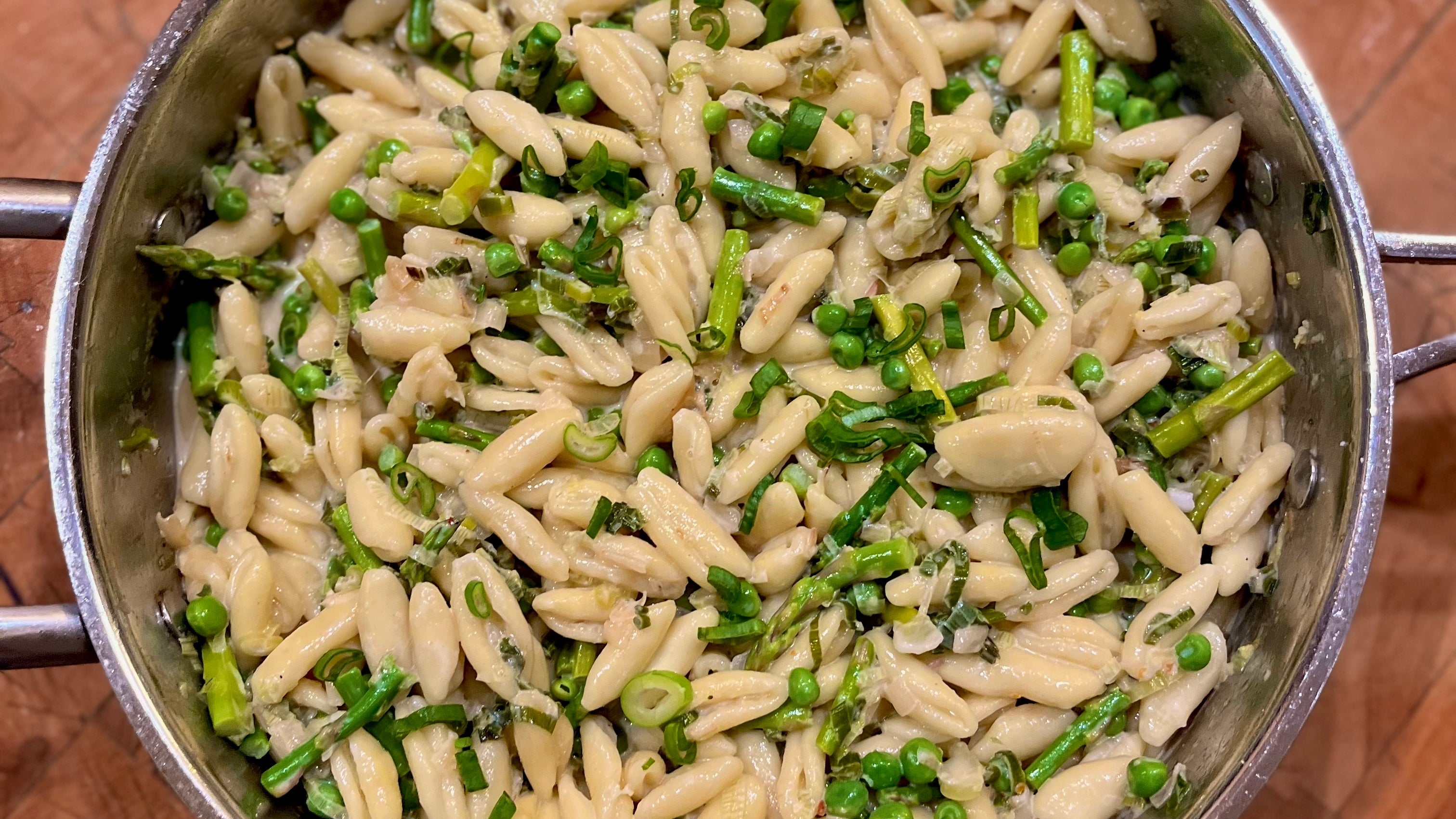
By name alone, this is the pasta dish that defines spring. This pasta primavera is super allium-heavy, but the acid from the lemon tempers the onion flavour, keeping it from being overwhelming. The result is a bright, almost refreshing pasta dish that truly tastes like spring.
Ingredients
- 450 g Cavatelli or Orecchiette
- 2-3 teaspoons butter
- 2 leeks, chopped
- 5 spring onions, sliced (both white and green parts)
- 2 cloves garlic, minced
- ¼ cup peas
- 1 cup asparagus, roughly chopped
- Juice of 1 lemon
- Zest of 1 lemon
- 1 handful chopped parsley
- 1 cup grated Parmesan
Bring a pot of water to a boil with a big pinch of salt — and by pinch I mean a full claw. (A whole tablespoon, if you want to be exact.) Cook your pasta until it’s al dente, or about two minutes less than the suggested cooking time. Drain, reserving 1 cup of pasta water. Meanwhile, heat your butter in a skillet or saucepan until light brown. Add all of your alliums — leeks, spring onions, and garlic — and cook for three to five minutes, or until soft and fragrant. Add asparagus and peas and cook until bright and tender, about seven or eight minutes. Add salt to taste, remembering that the pasta water is going to add its own salt content.
Throw in your pasta, lemon juice and zest, pasta water, and some solid cranks of black pepper or red pepper flakes (or both). After a few minutes over low heat, you should have a light, creamy sauce. Serve with more parmesan, top with freshly sliced spring onion and parsley, and get ready to devour the zesty goodness.
Butter braised leeks
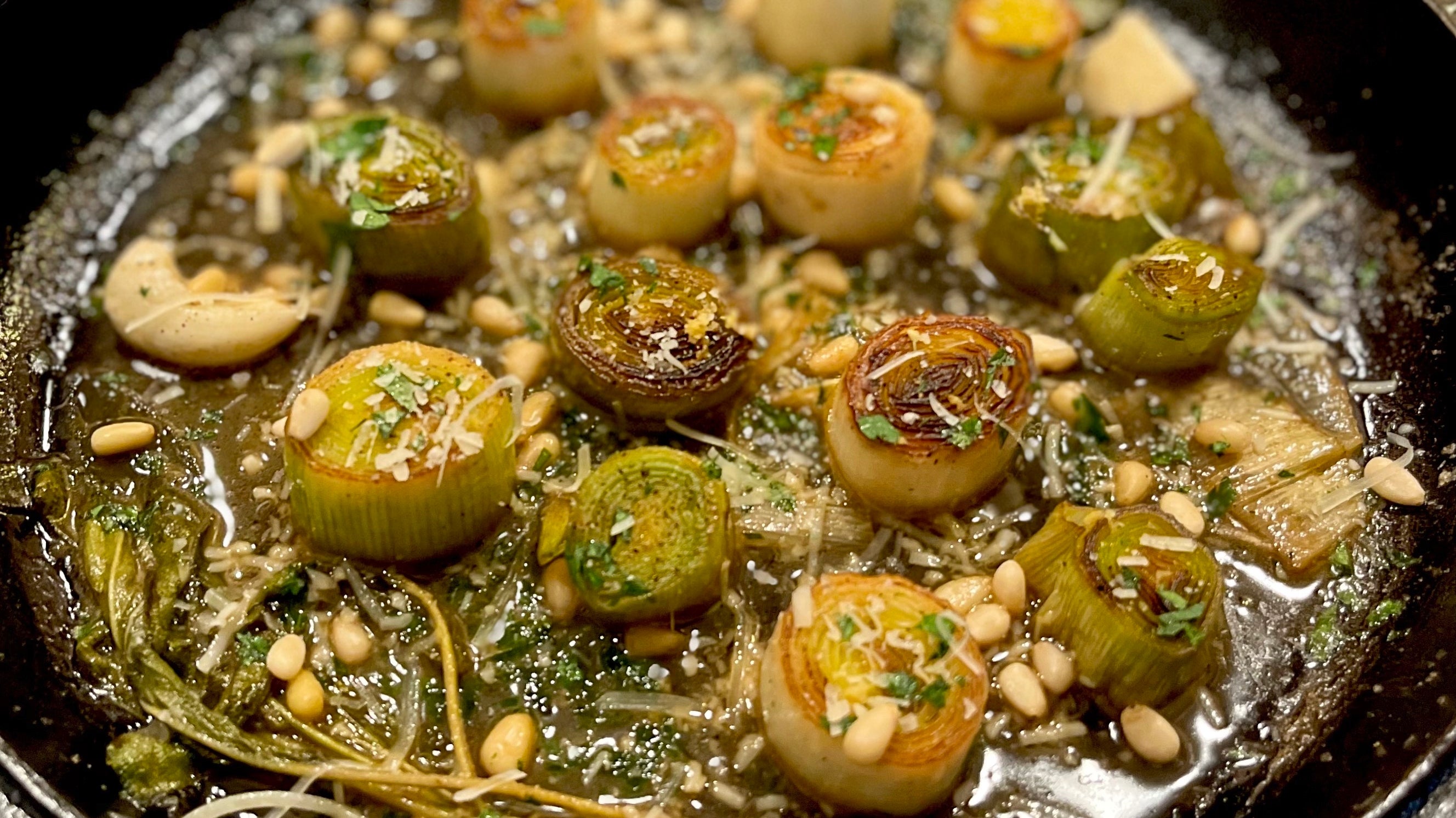
Leeks could be my favourite allium simply because they’re so conducive to eating all by themselves. In this recipe, the caramelization on the outside combines with the tender innards and a rich but acidic sauce, hitting every note. If you’re looking for a meaty vegetable other than eggplant or artichoke, the leek is your friend.
Ingredients
- 2-3 leeks, the thicker the better
- 2-4 teaspoons butter
- 2 cloves crushed garlic
- 6 fresh sage leaves
- ¼ cup pine nuts
- Zest of 1 lemon
- Grated parmesan to taste
- Salt and pepper to taste
Cut your leeks into inch-thick rounds and discard the root and tip. Let them soak in water for at least 10 minutes so any dirt can float to the bottom, then drain and let dry. Meanwhile, get a skillet hot and add your butter. Swish that around, then brown your leeks on both sides — about three minutes on the first side, two on the second. Be careful flipping them so they don’t fall apart, and add butter as needed to keep them from sticking or burning.
After your first flip, add the sage and garlic and cook until fragrant, then tip your pan and spoon all that garlic-sage butter over your leeks. Once they’re nice and caramelised, deglaze with a tablespoon of white wine vinegar and add a cup of broth. Braise for fifteen minutes, then top it all off with lemon zest, pine nuts, and grated parmesan.
Grilled leeks
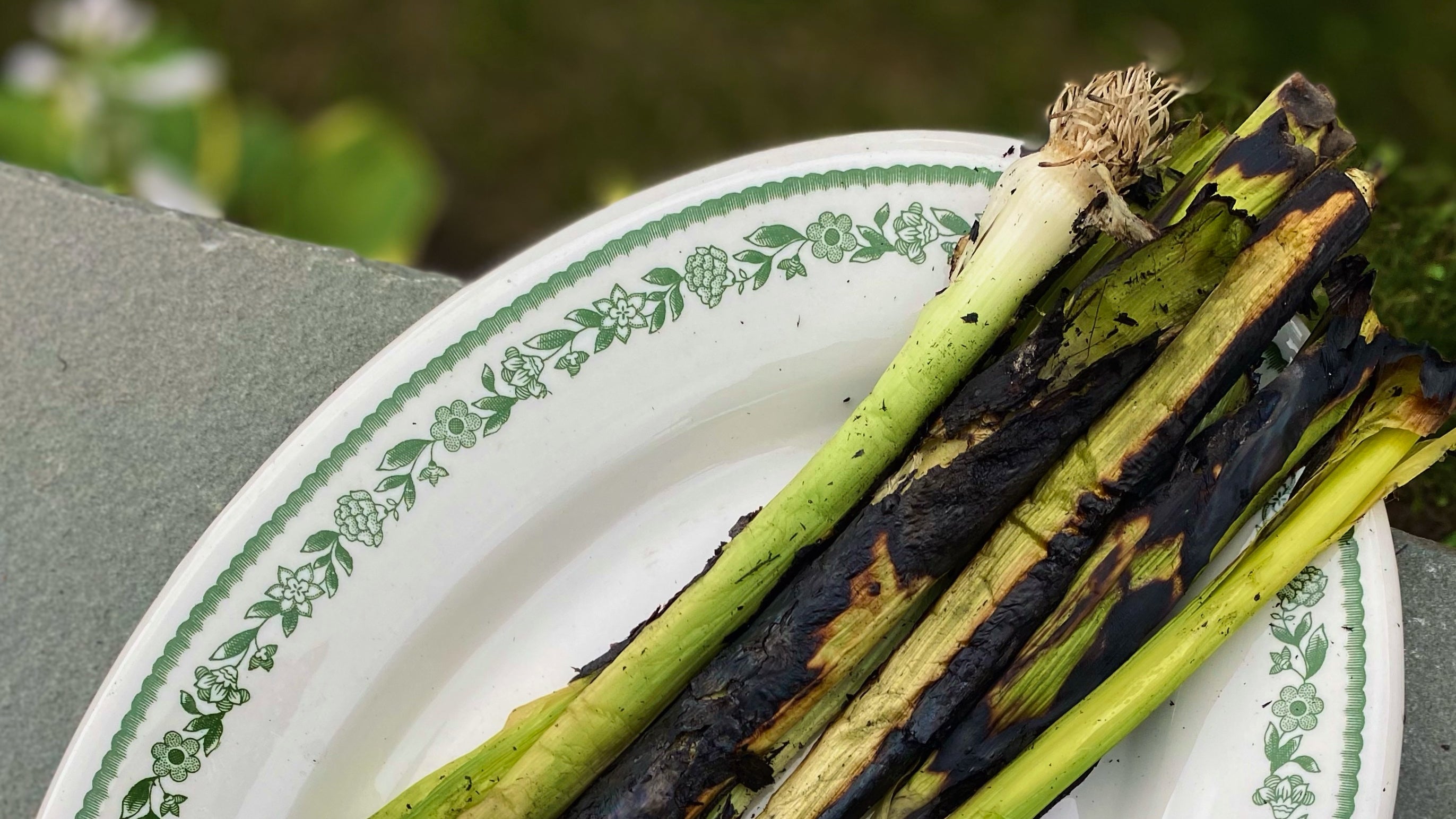
Speaking of eating leeks all by themselves, why not try grilling them and eating them whole? The best part of this recipe is how simple it is. By creating char and loads of caramelization, you’re letting the natural sugars of the leek provide the flavour, so all that’s left to add is a bit of oil and salt.
Ingredients
- 1-2 leeks per person
- Olive oil
- Sea salt
For this recipe, clean your leeks while still keeping them whole. Trim off the excess root, wash off the outer layer of dirt and sand, and then make an incision lengthwise through the top third. Soak the leeks in water for at least 10 minutes, which will help any additional dirt that might be on the inside fall to the bottom.
Once clean, arrange your leeks on a very hot grill (450-500℉) to cook, turning often, until they’re charred all over and beginning to warp. Pull them off the grill and let them rest while wrapped in foil or newspaper for 10–20 minutes. (This additional time is essential so that they continue to steam and create the tender heart we’re looking for.) Peel off the charred exterior and cut them lengthwise to get at that buttery, steamed goodness. Top with olive oil and flakey sea salt.
Spring onion potato gratin
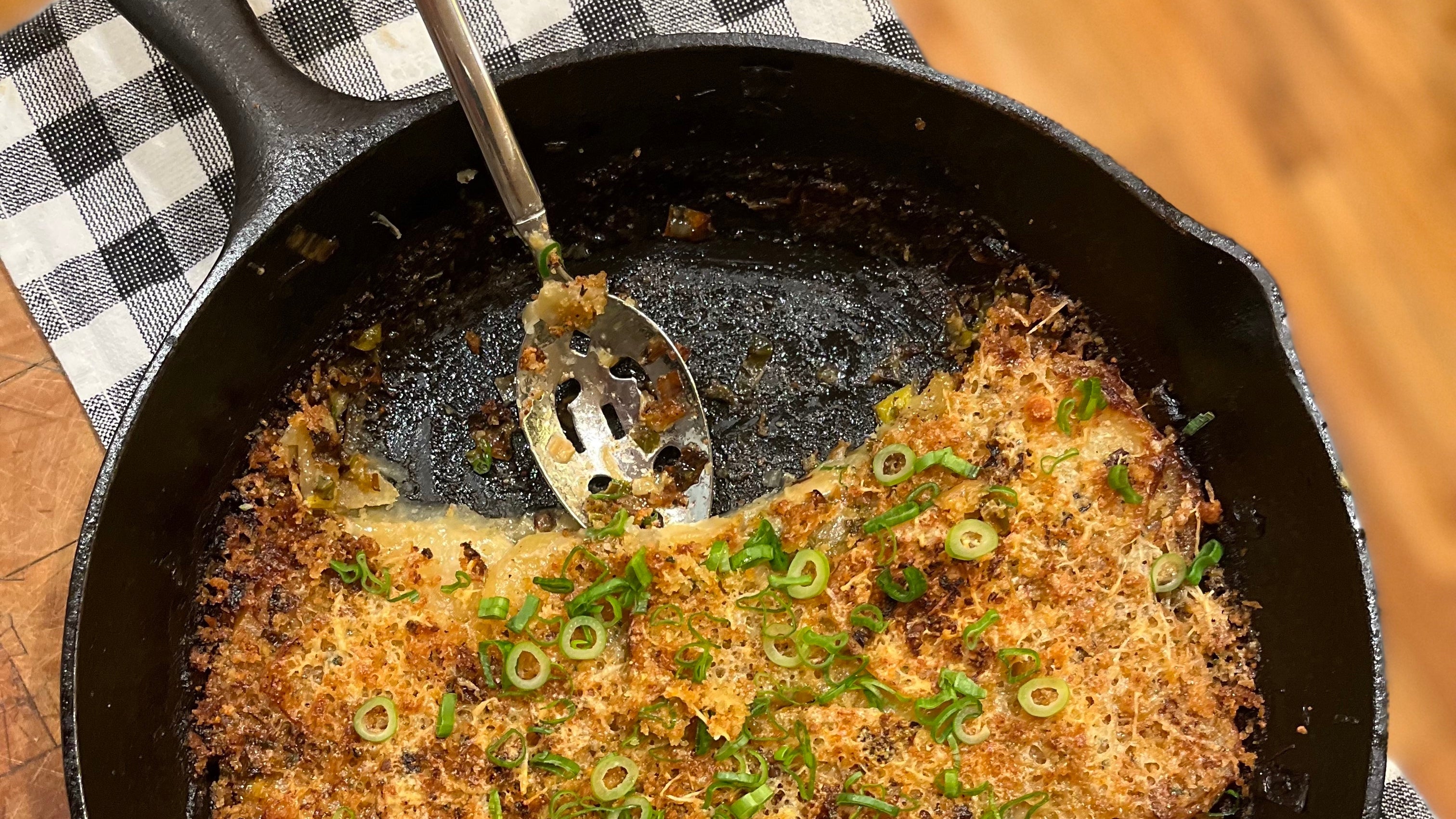
Spring onions are really just very young onions, harvested before they’ve had time to fully mature. The result is an allium much milder in flavour. Both the white and green parts are edible, but range in onion-y flavour from one end to the other, with the bulb end being the most powerful. In this recipe, we’re giving the leek a break from its marriage to the potato to create a hearty dish that can serve as a side or a full meal.
Ingredients
- ½ stick unsalted butter
- 2 cups spring onion, sliced (including white and light green portions)
- 6 Yukon Gold potatoes, thinly sliced
- Fresh thyme sprigs
- 2 cloves garlic, minced
- 1 cup heavy cream
- 1 cup stock
- Freshly grated gruyere to coat
- Salt, pepper, and red pepper flake to taste
- Juice of one lemon plus zest
Preheat your oven to 350℉ and get a pan or skillet hot on the stove. Melt half of the butter and let it cook until light brown, then add all of those spring onions. Two cups sounds like a lot, but the milder green portions and acidity from the lemon really balances it all out. (Another option is to combine a variety of alliums — leeks, green garlic, ramps, spring onions, and onions all work — keeping the total amount at 2 cups.) Add garlic, and don’t disturb until the bottoms of the spring onions are nicely browned. Add a splash of white wine to deglaze, followed by the stock, heavy cream, remaining butter, and thyme sprigs.
Simmer for 10–15 minutes, then discard the thyme sprigs and add salt and pepper. Remove from heat. In a separate baking dish, layer your potatoes, adding the sauce and spring onion mixture between each layer, until the potatoes are completely covered. Top with grated gruyere and bake for one hour, or until it’s golden brown and bubbling at the sides.
Spring onion pancakes
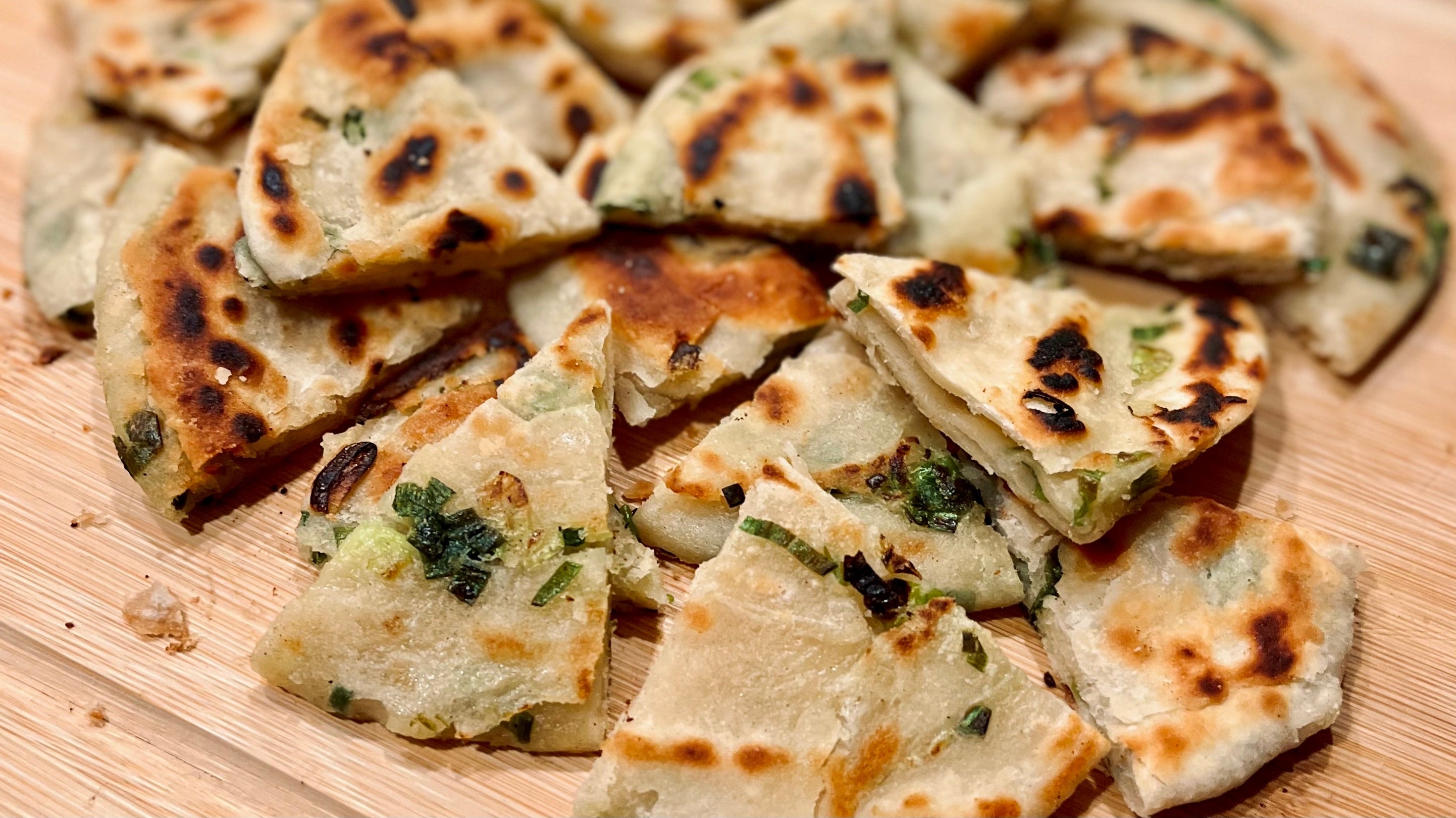
I truly can’t think of a better way to savour the flavour of spring onions than in a spring onion pancake. The key to the flakiest pancake is the same as with a puff pastry: It’s all in the lamination. Even though all of the rolling and spiraling feels like extra work, it’s essential.
Ingredients
- 2 cups flour
- ½ teaspoon salt
- ¾ cup boiling water
- ½ teaspoon sugar
- 2 teaspoons sesame oil
- 1 bunch spring onion, minced; about ¾ cup
- Vegetable oil for frying
- Salt to taste
Sift flour and mix with sugar in a large bowl. Add boiling water and mix until a flakey dough is formed, adding an additional teaspoon of water at a time if necessary to ensure all flour is absorbed. Knead for five minutes, until the dough is smooth, then cover and let rest for 30 minutes. Knead your rested dough for another five minutes, then cut it into four equal pieces. Roll each piece into a ball, then use a rolling pin to flatten out into thin, circular pancakes. Brush each pancake with sesame oil and sprinkle with salt and minced spring onion.
To achieve that sought after flakiness, roll each pancake into a rope so that the spring onions are tightly nestled inside. Coil each rope into a tight spiral and let them rest again for another 15 minutes. Then, roll out and flatten each spiral into a pancake once again. This process is necessary to get you the lamination needed to create spring onion pancakes similar to what you’re used to eating at restaurants.
To fry, heat your oil over medium heat in a flat pan until it’s very hot and easily coats the entire pan. One at a time, fry each pancake for a minute or less per side, or until golden brown. You’ll probably want to lower the heat if the oil begins to splatter too much. Transfer each pancake to a paper towel until cool enough to work with, then cut into triangles. Garnish with salt and fresh spring onion and get busy eating.
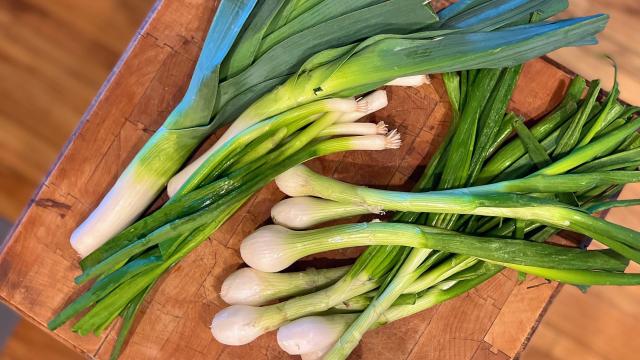
Leave a Reply
You must be logged in to post a comment.